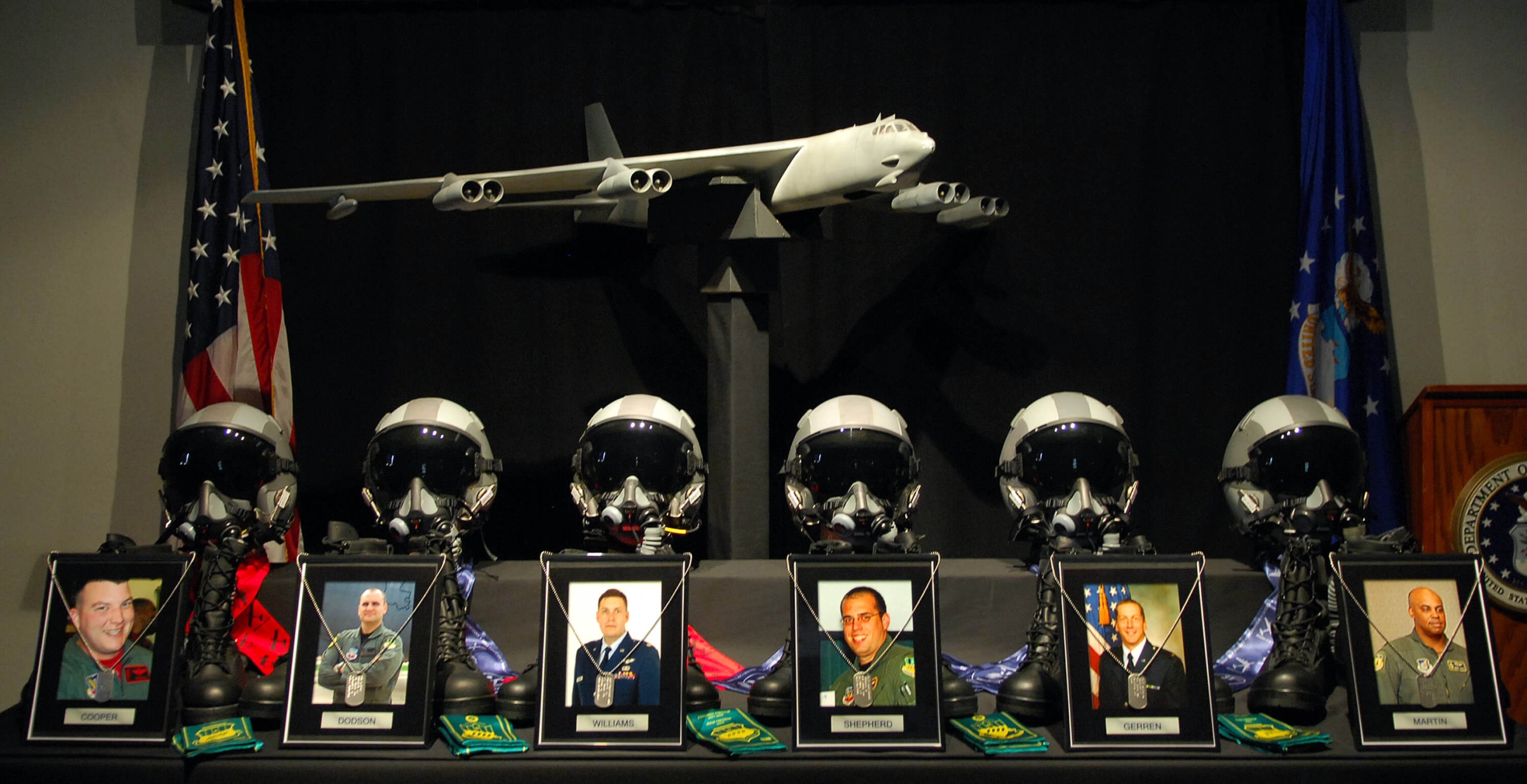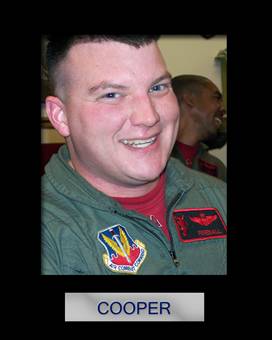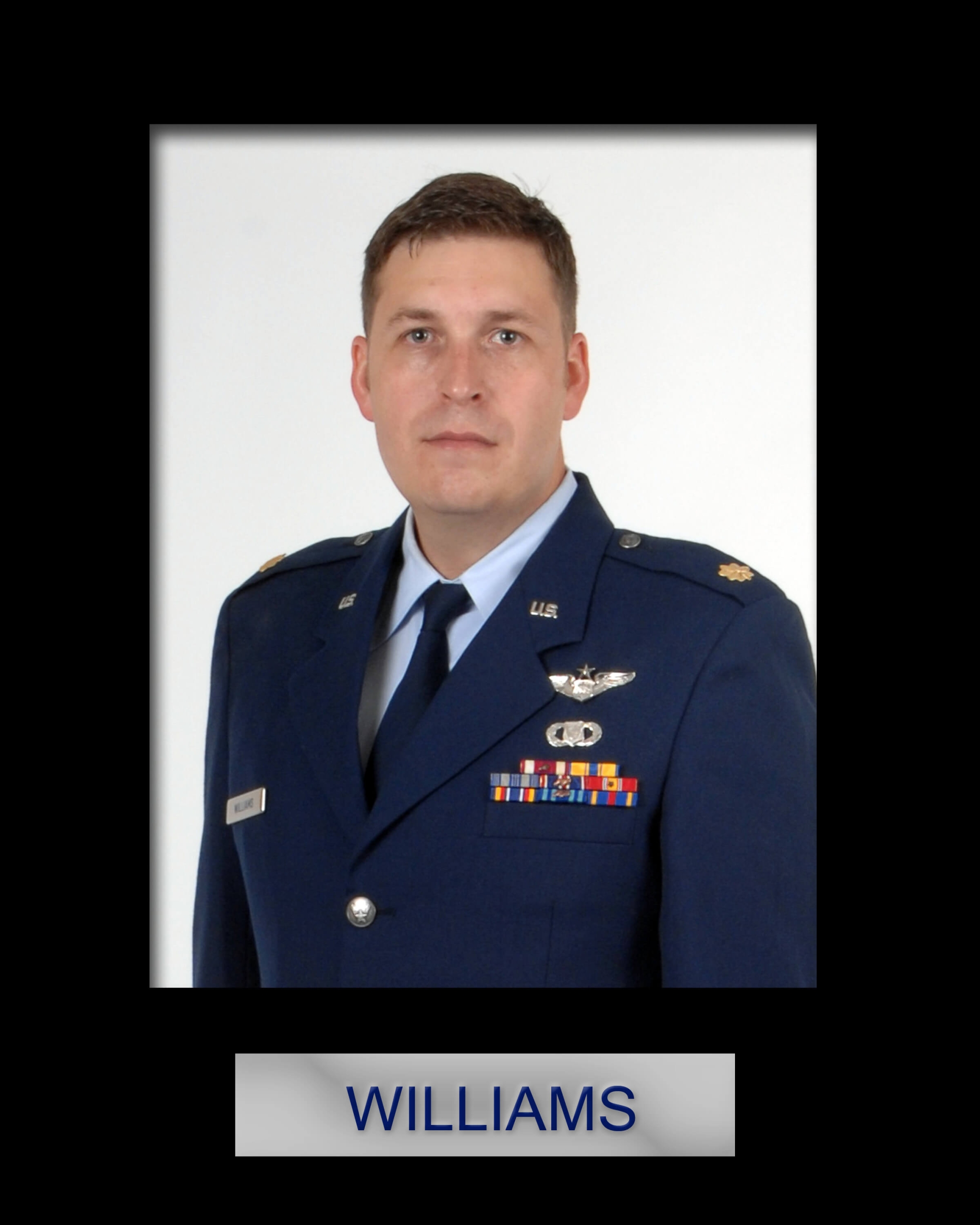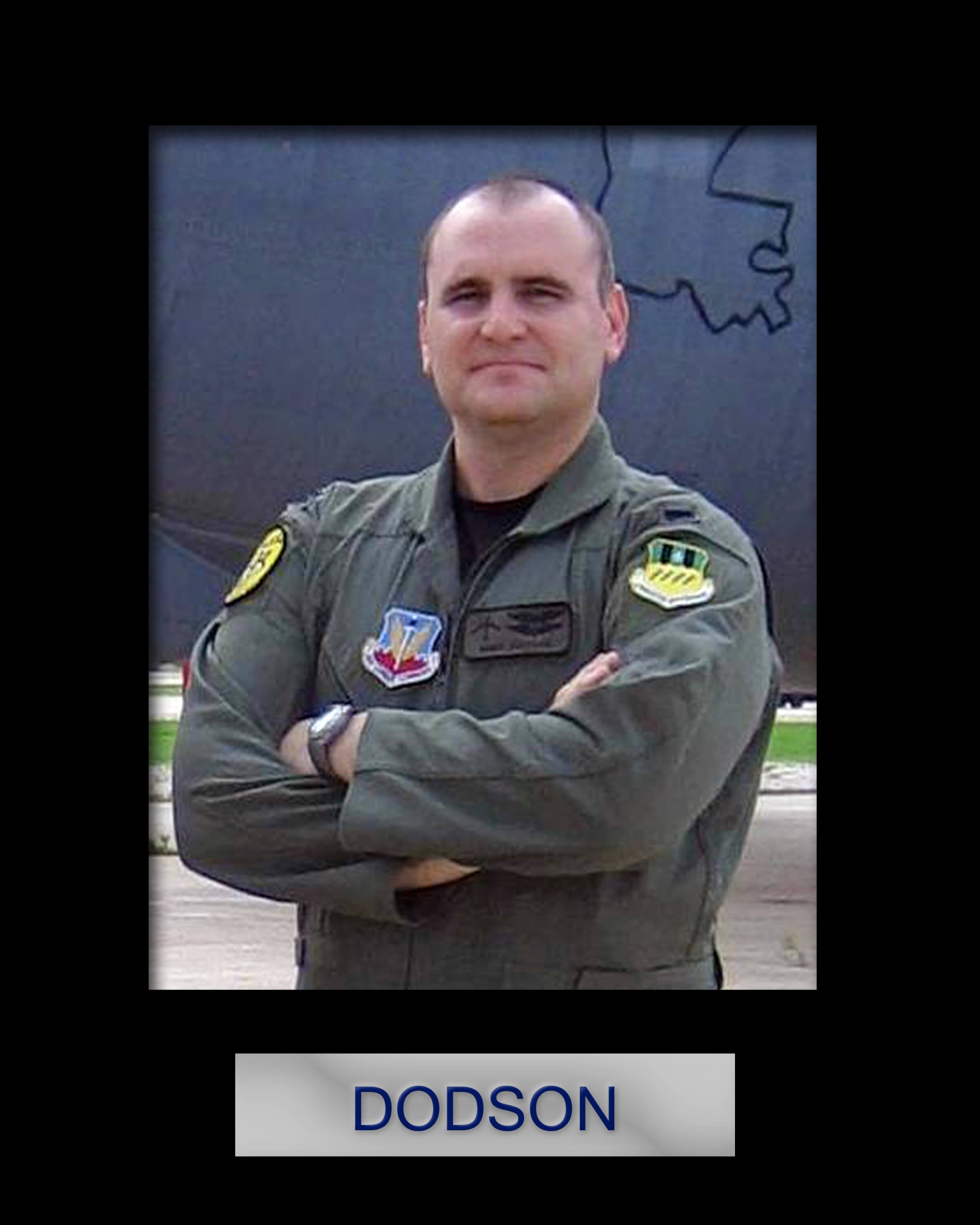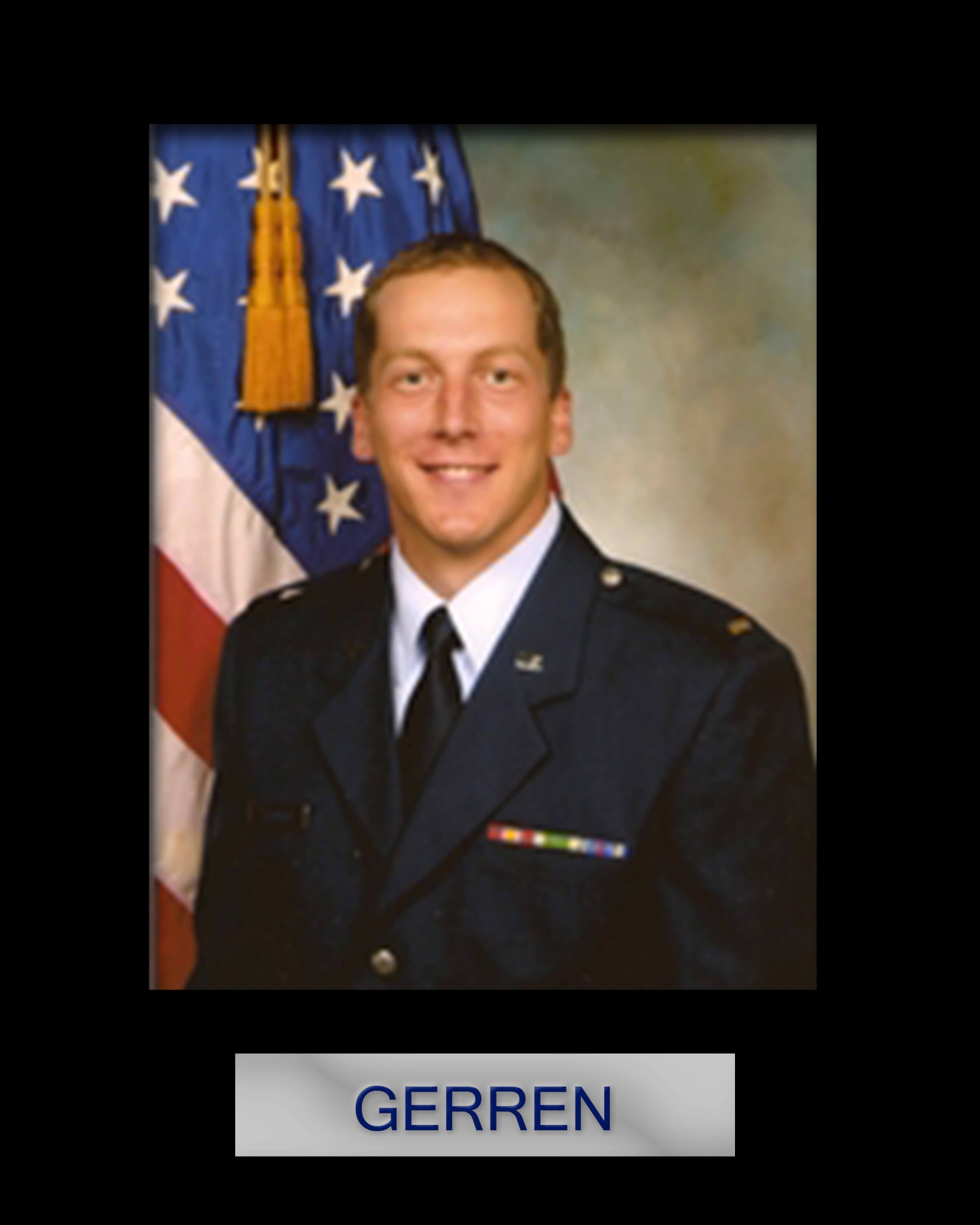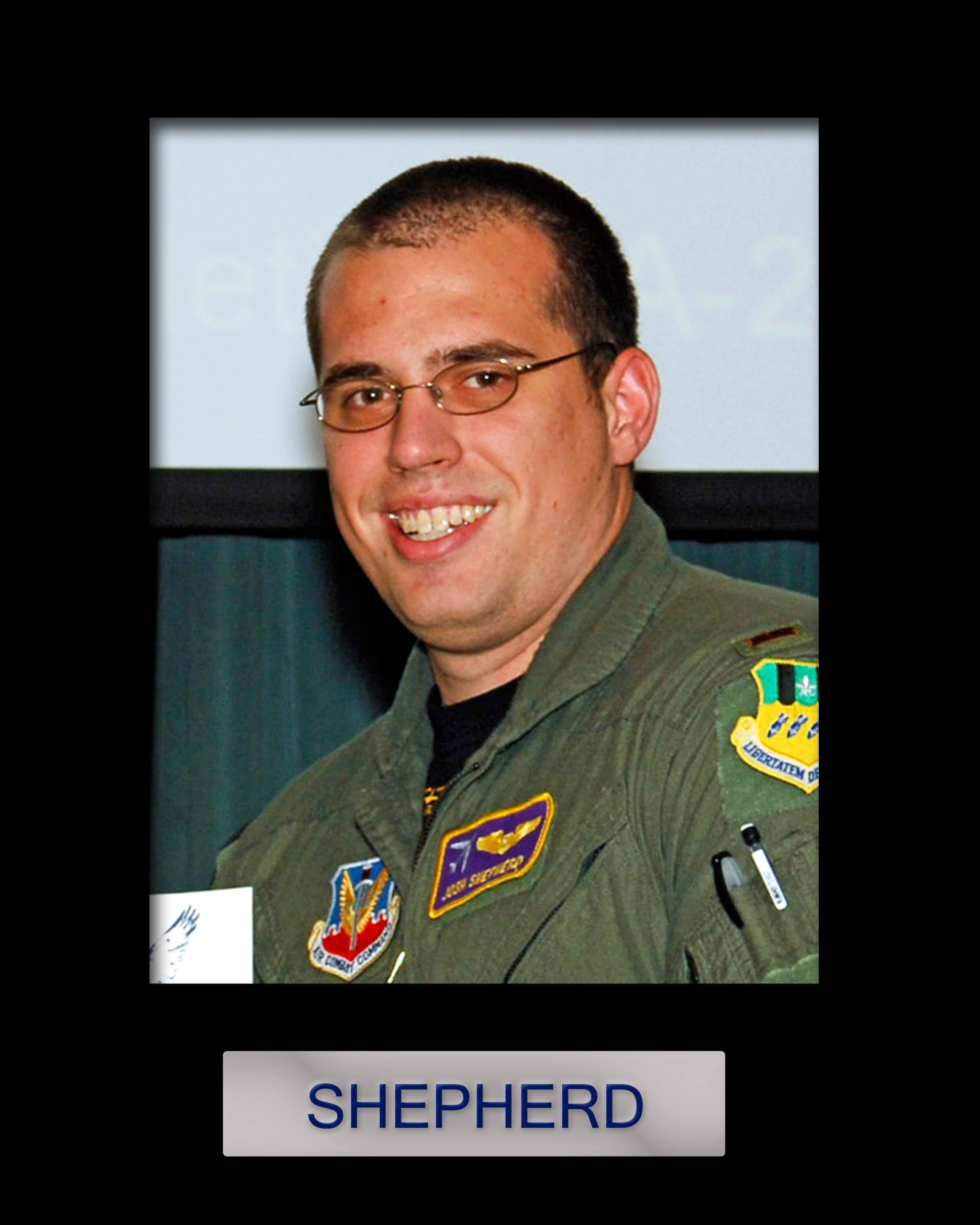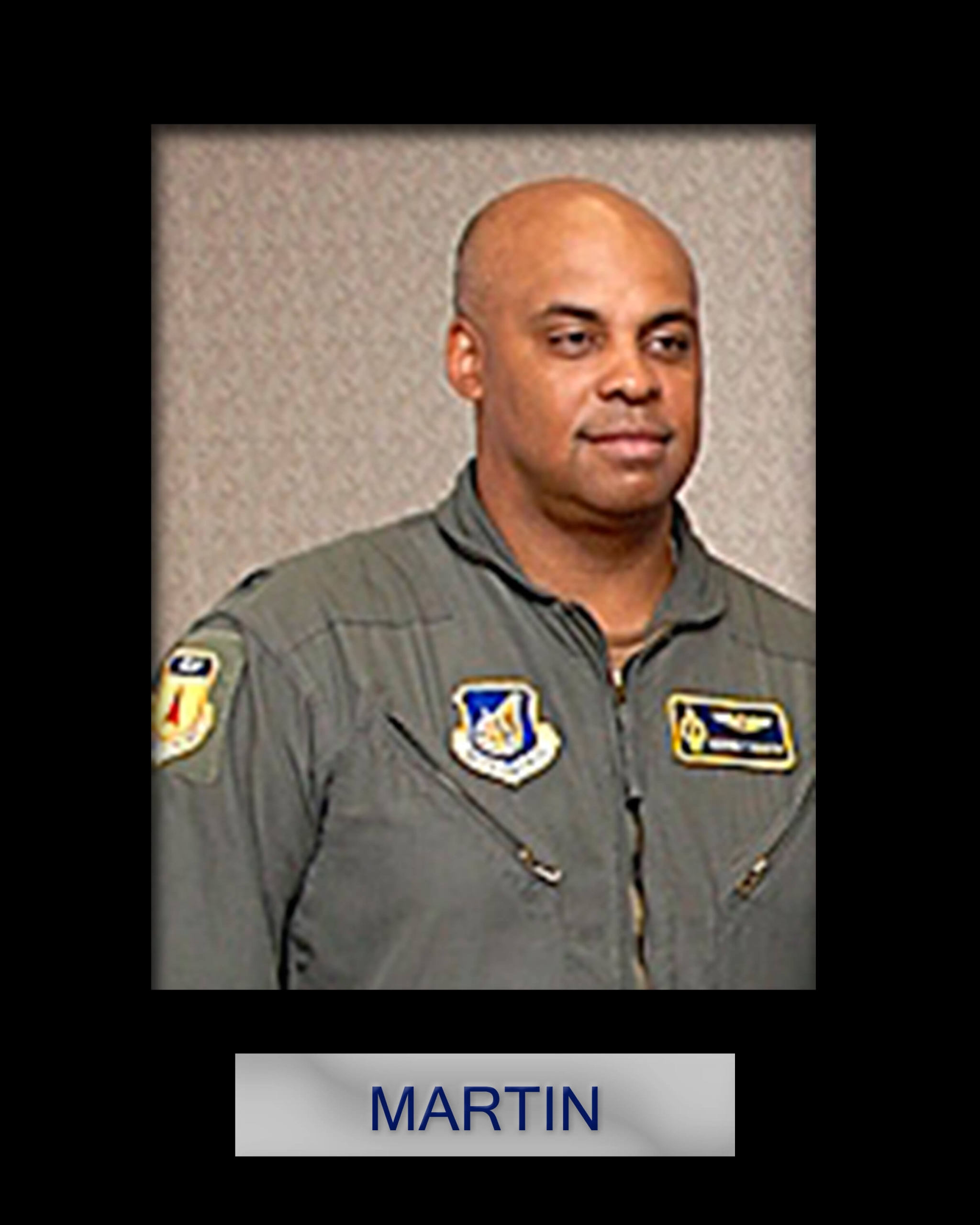21 July 2008:
All six airmen aboard the B-52 bomber that crashed Monday off Guam’s northwest coast were killed, Air Force officials confirmed Wednesday.
Aboard Raider 21 were Major Christopher M. Cooper, 33; Major Brent D. Williams, 37; Captain Michael K. Dodson, 31; First Lieuenant Joshua D. Shepherd, 26; First Lieutenant Robert D Gerren, 32; and Colonel George Martin.
The plane crashed about 30 miles northwest of Guam, the Air Force said in a statement.
Air Force crews switched from a rescue operation to a recovery operation over the 7,000-square-mile crash site, said Air Force spokeswoman Sergeant Ashleigh Bryant.
The bomber was scheduled to fly over crowds celebrating Liberation Day, which commemorates the U.S. capture of Guam from Japan in 1944, said Captain Joel Stark, spokesman for Andersen Air Force Base in Guam.
The B-52H Stratofortress, based at Barksdale Air Force Base in Louisiana, was in Guam as part of a four-month rotation when it went down about 9:45 a.m. Monday (7:45 p.m. ET Sunday), Stark said.
Martin was a physician and second in command of the medical unit at Andersen and not a member of the crew.
There were no weapons or munitions aboard the aircraft, the Air Force said.
Major Christopher M. Cooper was born in Massena, New York. He attended the University of Texas where he earned a Bachelor of Arts in Psychology in 1997. He entered the Air Force in 1997 and was commissioned through the Reserve Officer Training Corps.
Major Cooper completed Specialized Undergraduate Pilot Training at Vance Air Force Base, Oklahoma in 1998. After receiving his wings, he attended B-52 pilot qualification training at Barksdale Air Force Base, Louisiana and was assigned to fly the B-52 at Barksdale’s 20th Bomb Squadron, 2d Bomb Wing.
In 2000, Major Cooper transferred to the 9th Air Support Operations Squadron, Fort Hood, Texas where he served as an Air Force Liaison Officer. During his service in this capacity, he deployed to Iraq in the 4th Infantry Division in support of Operation Iraqi Freedom.
In 2003, Major Cooper returned to Barksdale AFB, Louisiana where he upgraded to B-52 Aircraft Commander and was assigned to fly at the 96th Bomb Squadron, 2nd Bomb Wing. At the 96th, Major Cooper served as a flight commander and was selected to attend Squadron Officer School in residence at Maxwell AFB, Alabama in 2005. In 2006, Major Cooper deployed in support of Operation Enduring Freedom, providing B-52 support to the fight in Afghanistan. In 2007, he became the Chief of Strategic Plans Division where he played a pivotal role in ensuring the 96th met its conventional and nuclear requirements. In early 2008, he completed the Air Command and Staff College non-residence course and upgraded to the position of B-52 Instructor Pilot.
In May, 2008, Major Cooper deployed to Andersen AFB, Guam in support of the Department of Defense’s continuous bomber presence in the Pacific. There he served as an Assistant Director of Operations for the 20th Expeditionary Bomb Squadron.
Major Cooper was a Command Pilot with 1885 hours of flying time including 16 combat hours. His awards include the Bronze Star, Meritorious Service Medal, Air Force Commendation Medal, Army Commendation Medal, Air Force Achievement Medal, and Army Achievement Medal.
Major Brent D. Williams spent his childhood in Oklahoma. He attended the University of Oklahoma earning a Bachelor Degree in Information System Management while enrolled in the ROTC program. He graduated and earned his Air Force commission in 1994. Major Williams also held a Master of Science in Military Operations from American Military University and a Master of Science from Air University.
Once on active duty, Major Williams held several posts at his first assignment culminating as Command Post Emergency Actions Officer at Seymour Johnson AFB, North Carolina from 1994 until 1997. During that time period, he deployed to Qatar in support of Air Expeditionary Force III as the command post officer in charge and was awarded Company Grade Officer of the Year twice.
Major Williams completed Specialized Undergraduate Navigator Training at Pensacola Naval Air Station, Florida in 1997. After receiving his navigator wings, he attended initial qualification training at Barksdale AFB, Louisiana and was assigned to fly the B-52H at Barksdale’s 20th Bomb Squadron, 2nd Bomb Wing in 1999.
In late 2000, Major Williams was selected for the Air Force Intern Program at the Pentagon and began a prestigious one year program to develop the future leaders of the USAF. As an intern, he was an integral team member of the Secretary of Defense’s response to 9/11.
Major Williams transferred to Randolph AFB, Texas in 2002, instructing navigator students as they pursued their wings at the 562nd Flying Training Squadron. He served as the 12th Operations Group Chief of Plans and Combat System Officer Project Officer. Major Williams spearheaded the implementation of the Air Force Chief of Staff’s highly visible Combat System Officer program.
In 2005, Major Williams returned to Barksdale AFB, LA upgrading to Radar Navigator, graduating from the 11th Bomb Squadron Flight Training Unit as a Distinguished Graduate having the highest scores from the training unit in the past eight years. He was then assigned to the 96th Bomb Squadron as Chief of Strategic Plans followed by an Assistant Direction of Operations position. He continued his flying instruction duties in the B-52, leading the squadron as acting Commander during a short notice deployment and Nuclear Surety Inspection, vital to the 2d Bomb Wing’s success.
Major Williams deployed to Andersen AFB, Guam in May 2008 in support of the Department of Defense’s continuous bomber presence in the Pacific area of responsibility. There he served as the director of operations for the 36th Operations Support Squadron.
Major Williams was a senior navigator with over 1300 flying hours qualified in T-34C, T-34A and B-52H aircraft. His awards include the Meritorious Service Medal with two oak leaf clusters, Air Force Commendation Medal with one oak leaf cluster and the Air Force Achievement medal.
Captain Michael K. Dodson was a native of San Antonio, Texas. He attended Embry Riddle Aviation University where he earned a Bachelor’s degree in Aviation Science while enrolled in the Reserve Officer Training Program. In 1999 he graduated from ERAU and earned his commission as an Air Force Officer. Captain Dodson was recently working on his Master’s in Business Administration from American Military University as well.
Captain Dodson began his military career at Randolph Air Force Base, Texas. He was assigned to the 562nd Flying Training Squadron where he excelled in the Joint Specialized Undergraduate Navigator Training program. He graduated from JSUNT in 2001 and was highlighted by his peers as the “Outstanding Contributor” of his class. Following graduation, Captain Dodson proceeded to Little Rock Air Force Base, Arkansas, where he graduated in the top 10-percent of his C-130 Navigator Initial Qualification Class and was the distinguished graduate of his Airdrop Qualification course. Upon graduation, he was assigned to the 41st Airlift Squadron at Pope Air Force Base, North Carolina.
Captain Dodson spent four years in the 41st Airlift Squadron where he was chief of tactics. In addition, Captain Dodson was a distinguished graduate from the navigator instructor school and later was upgraded to evaluator navigator. He gained tremendous flying experience in the C-130 attaining 293 combat hours and 365 combat support hours in Operations Enduring Freedom, Iraqi Freedom, and Joint Task Force Horn of Africa.
In 2005, Captain Dodson was competitively selected for and attended Euro-NATO Joint Jet Pilot Training at Sheppard Air Force Base, Texas. Upon graduation, Captain Dodson was selected to fly the B-52 and assigned to Barksdale Air Force Base, Louisiana. He completed his copilot initial qualification through the 11th Bomb Squadron in 2007 and soon found his operational home with the Buccaneers of the 20th Bomb Squadron. Captain Dodson was selected for squadron officer school in residence almost immediately and stood out as a top third graduate of the program. Captain Dodson was then selected to be the C-Flight commander. In 2008, his expertise was highlighted by the Air Combat Command Inspector General by being identified as a “Superior Performer” during the 2d Bomb Wing’s nuclear surety inspection.
In May 2008, Captain Dodson deployed to Andersen Air Force Base, Guam in support of the Department of Defense’s continuous bomber presence mission in the Pacific. There he continued to serve as a Flight Commander in the 20th Expeditionary Bomb Squadron.
Captain Dodson was a Pilot and Navigator with 2,121 hours of flying time including 293 combat hours. His awards include the Air Medal, Aerial Achievement Medal with three Oak Leaf Clusters, and the Air Force Commendation Medal with one Oak Leaf Cluster.
Lieutenant Robert D. Gerren graduated Summa Cum Laude from Saginaw Valley State University with a 4.0 grade point average. He entered active duty service on May 20, 2004 upon graduation from officer training school. Whilst at OTS he earned a small arms marksmanship ribbon.
Lieutenant Gerren attended joint undergraduate navigator training at Pensacola, Florida Aug. 13, 2004. Whilst at JUNT he graduated with an overall academic score of 98.8 percent and had above average scores in all four of four checkrides. He graduated JUNT Apr. 21, 2006 and proceeded to Randolph AFB, San Antonio to attend Electronic Warfare Officer Training School on Sept. 29, 2006. While there he was lauded for performing above average on academic tests with an average of 97.39 percent and a flight simulator average of 91.25 percent – leading to him graduating in the top third of his class.
He graduated Electronic Warfare Officer training Feb. 14, 2007 then was assigned to a B-52 Formal Training Unit in April 2007 and had a 99.58 grade point average. He graduated the FTU and became a member of the 20th Bomb Squadron in Nov 2007 and deployed six months later to support the Air Force Pacific Command presence objectives in the summer of 2008.
Lieutenant Joshua D. Shepherd spent his childhood in Pennsylvania. He attended Penn State University earning a Bachelor Degree in journalism with a minor in history and military studies while enrolled in the Reserve Officer Training Corps. He graduated and earned his Air Force commission in 2005.
Once on active duty, Lieutenant Shepherd completed Combat Systems Officer Training at Randolph Air Force Base, Texas in 2006. After receiving his navigator wings, he attended initial qualification training at Barksdale AFB, Louisiana and was assigned to fly the B-52H at Barksdale’s 20th Bomb Squadron, 2d Bomb Wing in 2007. In addition to his duties as a fully qualified B-52 Navigator, he was also a scheduling officer for the 20th Bomb Squadron.
Lieutenant Shepherd deployed to Andersen AFB, Guam in June 2008 in support of the Department of Defense’s continuous bomber presence in the Pacific area of responsibility. There he served as a flight scheduler for the 20th Expeditionary Bomb Squadron.
Lieutenant Shepherd was a navigator with over 500 flying hours qualified in T-43 and B-52H aircraft. His awards include the Air Force Outstanding Unit Award, National Defense Service Medal and Global War On Terrorism Service Medal.
Colonel George T. Martin, 36th Medical Group, Andersen AFB, Guam.
Arlington ceremony planned for crew Raider 21
6 November 2008
A service will be held November 14, 2008, at Arlington National Cemetery to honor Raider 21, the crew of Barksdale Air Force Base B-52 bomber Louisiana Fire, lost in a crash near Guam in late July 2008.
The service with full military honors, described by Arlington representatives as “burial of the comingled remains recovered from the accident,” will include escorts, a band, an honor guard, a horse-drawn caisson to carry a casket, a bugler to play Taps and possibly an Air Force fly-over.
Raider 21 members from Barksdale were Major Christopher M. Cooper, Major Brent D. Williams, Captain Michael K. Dodson, First Lieutenant Robert D. Gerren and First Lieutenant Joshua D. Shepherd. Also on the crew was Colonel George T. Martin, of Andersen Air Force Base, Guam, where the aircraft was temporarily deployed.
Only the bodies of Cooper and Williams were recovered and were buried by their family members in services earlier this year. Memorial services also have been held across the country for other crew members.
The bomber, which plunged into the ocean about 25 miles northwest of Apra Harbor late July 20, 2008, Shreveport time, was preparing to perform a fly-over as part of the Guam Liberation Day celebrations that commemorate the freeing of the island from Japanese control during World War II.
The crash is still being investigated.
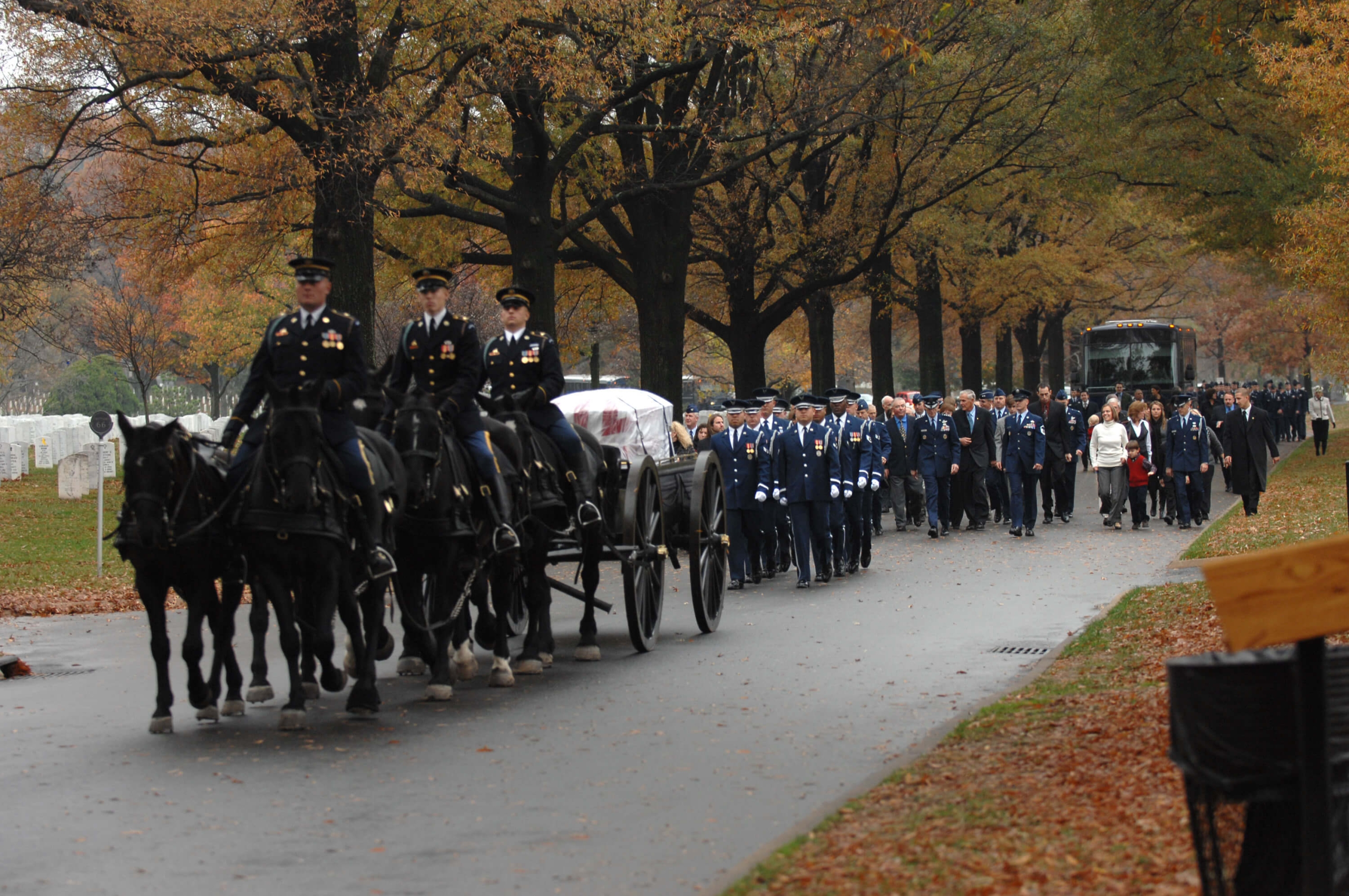
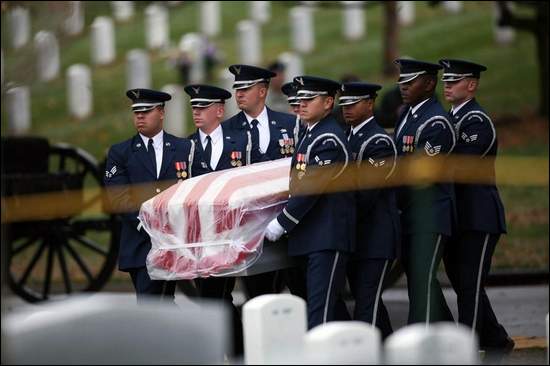
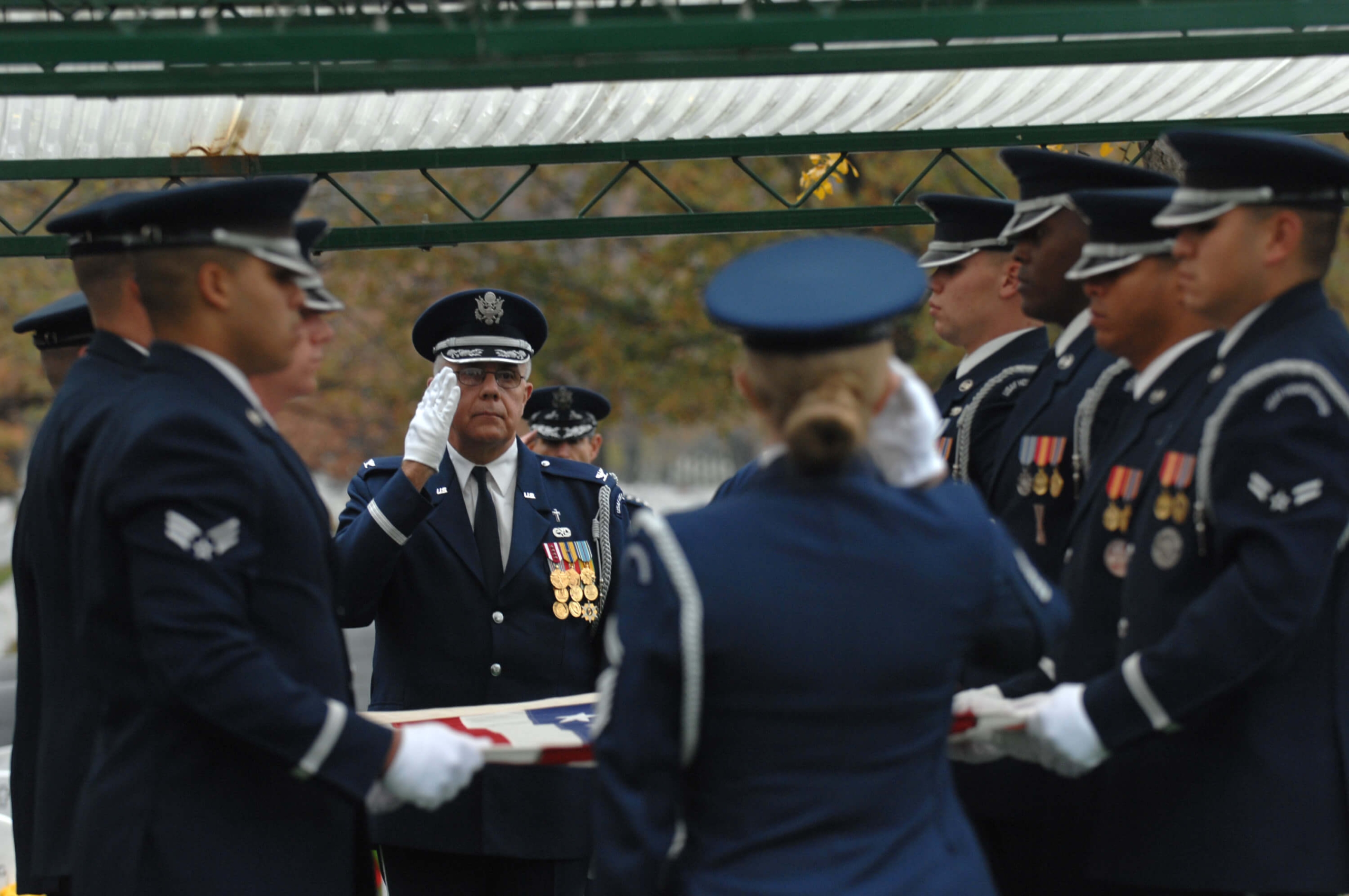
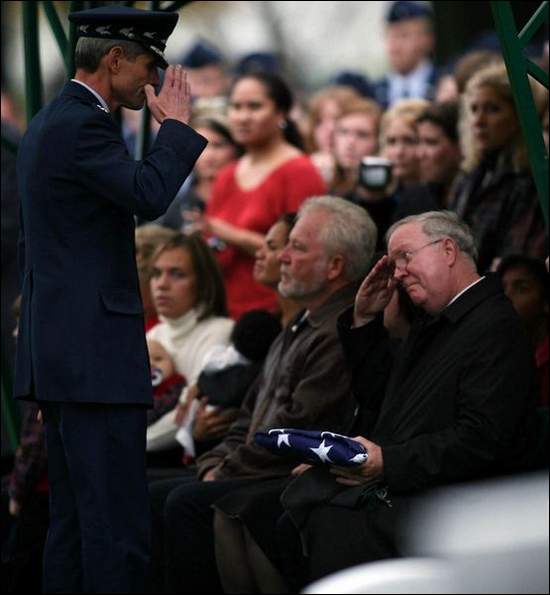
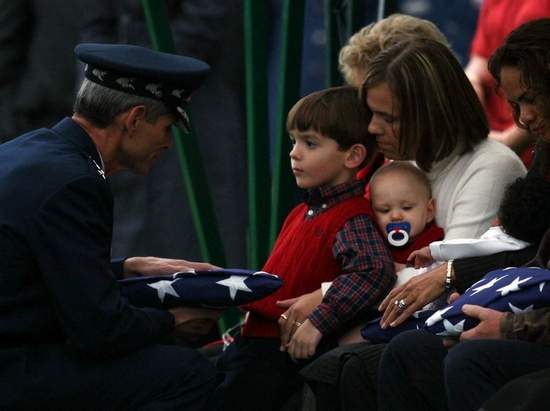
Michael Robert Patterson was born in Arlington and is the son of a former officer of the US Army. So it was no wonder that sooner or later his interests drew him to American history and especially to American military history. Many of his articles can be found on renowned portals like the New York Times, Washingtonpost or Wikipedia.
Reviewed by: Michael Howard

